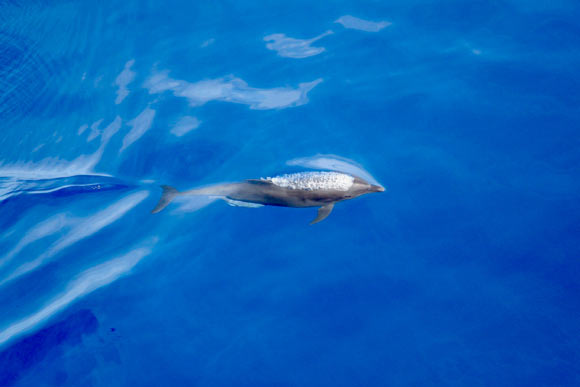The Eastern Tropical Pacific bottlenose dolphin (Tursiops truncatus nuuanu) prefers the deep waters off southern Baja California, the Pacific coast of Central America and Colombia and Ecuador, out to approximately 120º W; the northern range limit of this subspecies is between Magdalena Bay on the Pacific side of Baja California, and Santa Catalina Island, Mexico within the Gulf of California, whereas its southern limit might extend to at least the Galapagos Islands.

The Eastern Tropical Pacific bottlenose dolphin (Tursiops truncatus nuuanu). Image credit: NOAA / NMFS / SWFSC.
“Bottlenose dolphins are regularly sighted throughout the eastern Pacific (from Canada to Chile) and the Gulf of California,” said University of Miami marine mammalogist Ana Costa and her colleagues.
“Currently, only one species, the common bottlenose dolphin (Tursiops truncatus), is believed to occur throughout this geographic area.”
“In the eastern Pacific Ocean, three distinct forms of the species have been identified, with suggestions they may be different species: a southern California/Mexico coastal form, a northern temperate offshore form, and an eastern tropical Pacific offshore form.”
In their new study, the authors examined total body length and skull morphology of the three forms with an attempt to clarify their taxonomic status and distribution.
They used multivariate and clustering analyses to examine the level of differentiation among the bottlenose dolphin populations.
They found that the new subspecies, called the Eastern Tropical Pacific bottlenose dolphin (Tursiops truncatus nuuanu), is smaller than other common bottlenose dolphins.
“We found two distinct morphological clusters: the new subspecies found in the eastern tropical Pacific and the common bottlenose dolphins found primarily in the eastern and western North Pacific waters,” Dr. Costa said.
“The Eastern Tropical Pacific bottlenose dolphins might be differentiating due to the distinct environmental conditions in these waters, such as oxygen and salinity levels and temperature conditions.”
“A greater understanding of marine mammal populations is vital for preserving and protecting different species and subspecies at a time of global warming,”
“The conservation and management of marine life should be an international priority.”
The team’s paper was published in the Journal of Mammalian Evolution.
_____
A.P.B. Costa et al. Tursiops truncatus nuuanu, a new subspecies of the common bottlenose dolphin from the eastern tropical Pacific. J Mammal Evol, published online December 10, 2022; doi: 10.1007/s10914-022-09641-5







